The Advantages and Disadvantages of Carbon Fiber Glasses
Carbon fiber glasses offer a superior strength-to-weight ratio and a unique high-tech look, making them perfect for premium eyewear. However, this performance comes with higher manufacturing costs, complex production needs, and significant design limitations like a lack of color options. Understanding these trade-offs is the key to using the material successfully.
What is Carbon Fiber in Eyewear?
To appreciate its unique properties, you first need to understand what carbon fiber actually is. It is a high-performance composite material, not a simple plastic or metal. The process begins with incredibly thin carbon filaments, each one 10 to 20 times thinner than a single human hair. These filaments are woven together into a fabric, which is then combined with a resin to form the final, solid material for the frames.
The strength of this material comes from its atomic structure. During production, the material undergoes intense heating, which bonds the carbon atoms into long, crystalline chains. This means the atoms are perfectly aligned along the length of the fibers, creating a material with incredible strength relative to its very low weight. It is this precise internal structure that gives carbon fiber its revolutionary properties.
The Manufacturing Process
The production of carbon fiber glasses is a sophisticated, multi-stage process. It starts with a precursor material that is heated to over 2000°C in a furnace. This intense carbonization process burns off almost all non-carbon elements, leaving behind a material that is over 90% pure carbon. This purity is what gives the fibers their diamond-like strength at a molecular level.
Most Importantly: The complexity of this manufacturing process directly impacts the cost and quality of your final product. You must work with experienced suppliers who have mastered these demanding technical steps to avoid inconsistent and poor-quality frames.
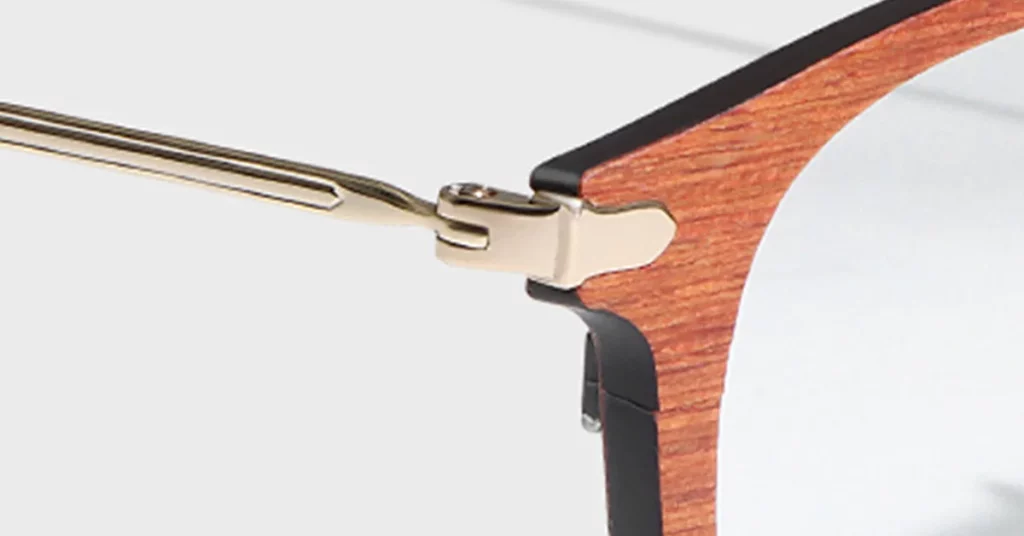
Advantages of Carbon Fiber Glasses
The reasons for choosing carbon fiber all center on delivering a better experience to your customer through superior physical properties. When used correctly, it creates a product that feels unlike anything else on the market.
Ultra-Lightweight Performance
Carbon fiber frames deliver an exceptional lightweight experience. These frames weigh about 40% less than titanium glasses and can feel as light as just a few coins in your hand. This means your customers will barely notice they are wearing them. This is a massive benefit for all-day prescription use or for any activity where comfort is a priority.
Superior Strength-to-Weight Ratio
Despite their featherlight feel, carbon fiber glasses possess incredible structural integrity. The material provides strength that is 7 to 9 times greater than steel for the same weight. This allows you to design frames that can handle significant daily stress without ever feeling bulky or heavy.
Key Metric: On a pound-for-pound basis, carbon fiber has a strength-to-weight ratio that is approximately 20 times better than steel. This makes it one of the strongest and most efficient materials you can choose for any eyewear application.
Exceptional Durability and Resilience
These frames demonstrate remarkable resilience against environmental factors. The material resists corrosion, temperature changes, and chemical exposure far better than most metals. This makes carbon fiber glasses perfectly suited for customers with active lifestyles or those who work in demanding conditions.
For Example: Unlike metal frames that can be damaged by sweat or humidity, a carbon fiber frame maintains its structural integrity and finish. This translates directly to a longer product life and higher customer satisfaction.
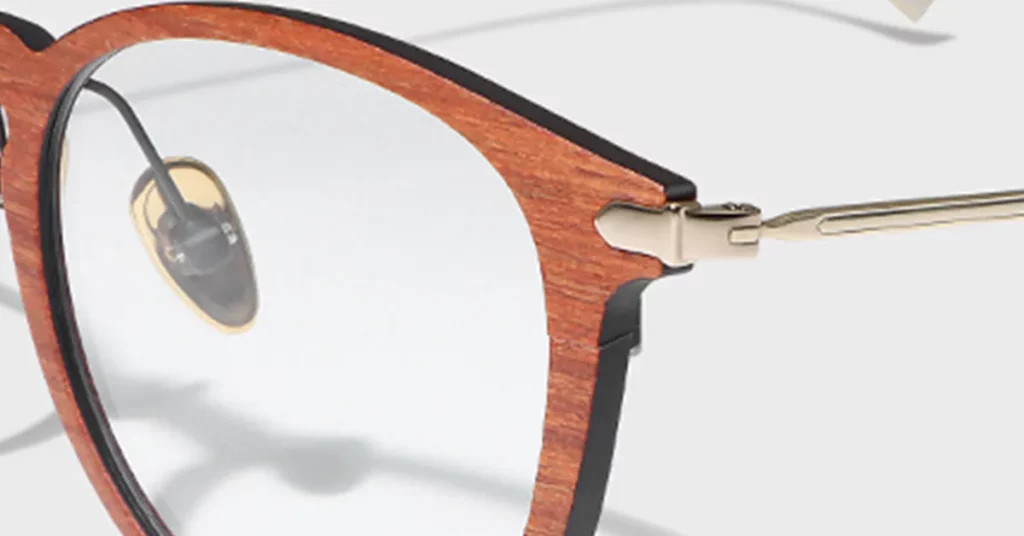
Impact and Wear Resistance
The woven structure of the material provides excellent protection against drops and daily wear. Carbon fiber’s inherent flexibility allows it to absorb shock without cracking, while the hard surface resists the small scratches and scuffs that can degrade other materials over time.
Pro Tip: The common twill weave pattern you see on carbon fiber is not just for looks. It helps distribute impact forces across multiple directions, which is a key reason the material is so tough and damage-resistant.
Hypoallergenic Properties
Carbon fiber offers a completely hypoallergenic solution. The material is 100% free of nickel, copper, or other metals that commonly cause skin irritation. This immediately makes your product available to a segment of customers who cannot wear typical metal eyewear.
Best Practice: You should actively position carbon fiber glasses as the premium choice for customers who report allergic reactions to metal. This solves a real problem for them and easily justifies a higher price for the product.
Temperature and Chemical Resistance
Carbon fiber glasses maintain their shape and fit across extreme temperature ranges. The frames will not warp or expand in hot weather, nor will they become brittle and fragile in the cold. This stability ensures a consistent and reliable fit for your customer, no matter the climate.
Distinctive High-Tech Aesthetic
Carbon fiber has an instantly recognizable visual signature that signals quality. The woven pattern creates a sense of depth and technical precision that you cannot achieve with simple plastics or metals. This unique look helps your brand stand out in a visually crowded market.
Simple Analogy: High-end automotive and aerospace companies use carbon fiber for the exact same reason. The material itself becomes a symbol of performance and advanced engineering, which adds perceived value to your product.

Disadvantages of Carbon Fiber Glasses
For all its strengths, carbon fiber is not the right choice for every application. Its limitations are just as significant as its benefits, and you must understand them to avoid costly mistakes in design and production.
High Manufacturing Cost & Complexity
Producing carbon fiber frames is significantly more expensive than using conventional materials. The raw materials alone can cost 10 to 12 times more than steel. This cost is a primary factor you must build into your pricing strategy.
Critical Warning: The specialized nature of carbon fiber production means there are fewer qualified suppliers. This can create supply chain risks. You must secure a reliable partner who can consistently deliver high-quality frames.
Brittleness and Fracture Risk
While very strong, carbon fiber is also a brittle material. Unlike a metal frame that will bend or deform when pushed too far, carbon fiber can fracture suddenly and completely when its stress limit is exceeded. This is a critical factor in its performance.
Definition: Brittleness means the material has very little “give” before it breaks. Think of it like the difference between a metal wire that you can bend back and forth and a dry twig that snaps cleanly when you apply enough force.
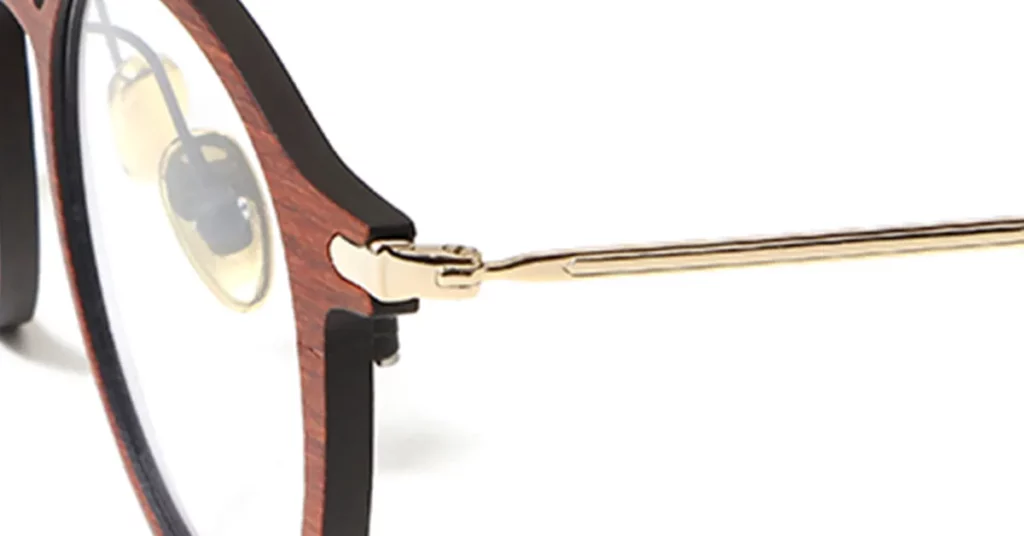
Concerns Over Hidden Damage
Carbon fiber can sustain internal damage that is invisible on the surface. An impact or excessive force can cause layers to separate or micro-cracks to form inside the material. This hidden damage weakens the frame and can lead to a sudden, unexpected failure later.
Limited Color and Finish Options
The natural color of pure carbon fiber is black. This severely restricts your design flexibility if you want to offer a wide range of colors to your customers. Applying color often requires surface treatments that can compromise the material’s signature look.
Remember This: Most of the “colored” carbon fiber you see uses a spray-applied finish or mixes in other materials. This adds cost and complexity, and the finish can sometimes be less durable than the natural black carbon fiber itself.
Challenges with Repair and Adjustment
Carbon fiber glasses present major challenges for repairs and adjustments. The material cannot be heated and reshaped the way an optician adjusts a metal or acetate frame. Any damage typically requires a complete replacement of the part, not a simple repair.
Common Mistake: Many brands and retailers fail to train their staff on the unique limitations of carbon fiber. This leads to improper handling, damaged frames, and frustrated customers when they learn a simple adjustment is not possible.

Carbon Fiber vs. Other Materials
To make a truly strategic choice, you must see how carbon fiber compares directly to the other primary materials used in eyewear today.
| Feature | Carbon Fiber | Titanium | Stainless Steel | Acetate |
| Weight | Lightest | Light | Moderate | Light |
| Strength | Excellent | Excellent | Good | Fair |
| Flexibility | Moderate | Good | Limited | Excellent |
| Hypoallergenic | Yes | Generally Yes | Variable | Yes |
| Cost | Highest | High | Moderate | Low-Moderate |
The Bottom Line: Carbon fiber is the clear winner for applications where the absolute lightest weight and highest strength are required. However, for a balance of performance, adjustability, and cost, titanium often presents a more versatile option for premium lines.
Cost-Benefit Analysis
Carbon fiber glasses command a premium price that reflects their high material cost and advanced manufacturing. While the initial investment is higher, the blend of lightweight comfort, long-term durability, and a high-tech look can justify that price for the right customer.
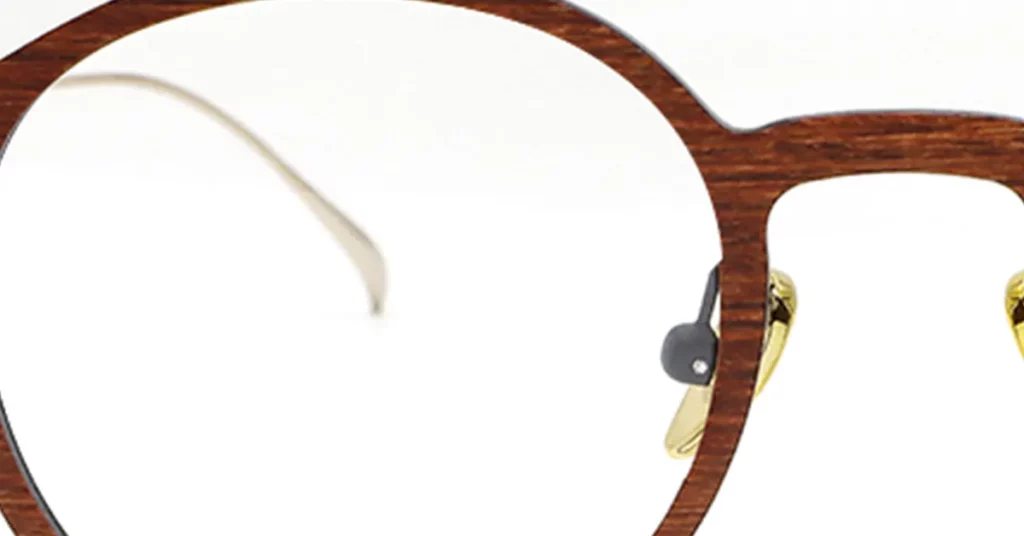
Applications and Best Use Cases
The unique properties of carbon fiber make it ideally suited for specific product lines and customer profiles where its benefits outweigh its limitations.
Premium and Performance Eyewear
Carbon fiber excels in products where weight reduction and strength are the most important factors. This makes it perfect for high-end prescription glasses, especially for customers with strong prescriptions or larger frame styles where weight can become a comfort issue.
Best Practice: Position carbon fiber as your ultimate solution for customers demanding the lightest possible frame that does not sacrifice durability. This is a very clear and powerful value proposition, especially for all-day wear.
Luxury and Tech-Focused Brands
The high-tech story and visual appeal of carbon fiber align perfectly with luxury brand positioning. For customers who value cutting-edge materials and engineering, a carbon fiber frame reinforces a message of quality, innovation, and exclusivity.
Key Target Customer Profiles
The ideal customer for carbon fiber glasses prioritizes performance and technology over price. This includes tech professionals, sports and outdoor enthusiasts, and design-conscious consumers who want a product that looks and feels different from everything else.
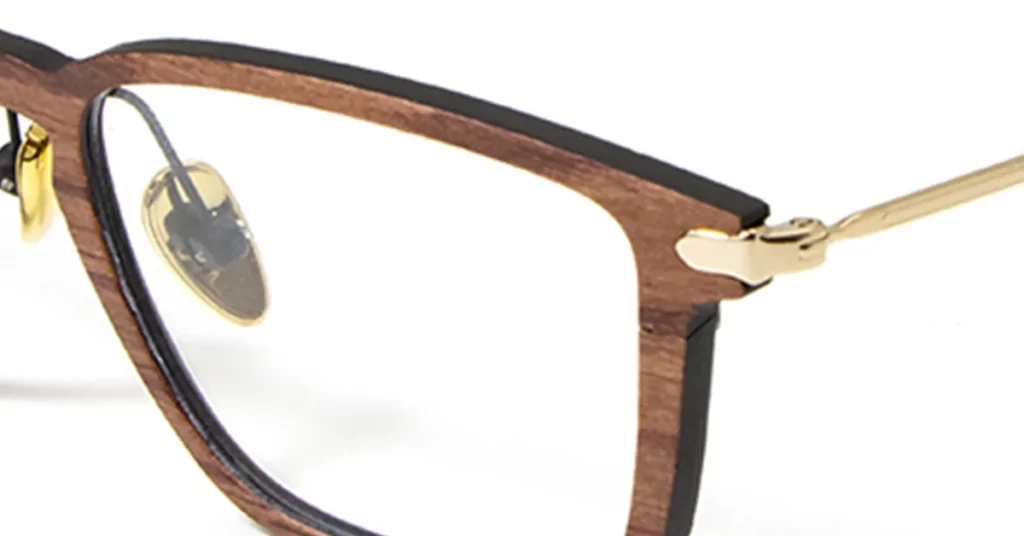
Manufacturing and Quality
Successfully producing carbon fiber eyewear demands a deep understanding of the material and a commitment to rigorous quality control from your manufacturing partners.
Design & Engineering Considerations
When designing a carbon fiber frame, you must account for its directional strength. Unlike metal, which is equally strong in all directions, a composite’s properties depend on how the fibers are oriented. This requires specialized design knowledge.
Pro Tip: Always work with designers who have direct experience with composite materials. They will know how to orient the carbon fiber layers to handle the specific stress points of an eyewear frame, preventing weak spots and potential failures.
Quality Control Challenges
Detecting internal defects in carbon fiber requires more than just a visual check. Flaws like voids or delamination (layer separation) can occur inside the material without any sign on the surface. This makes quality control a far more complex task.
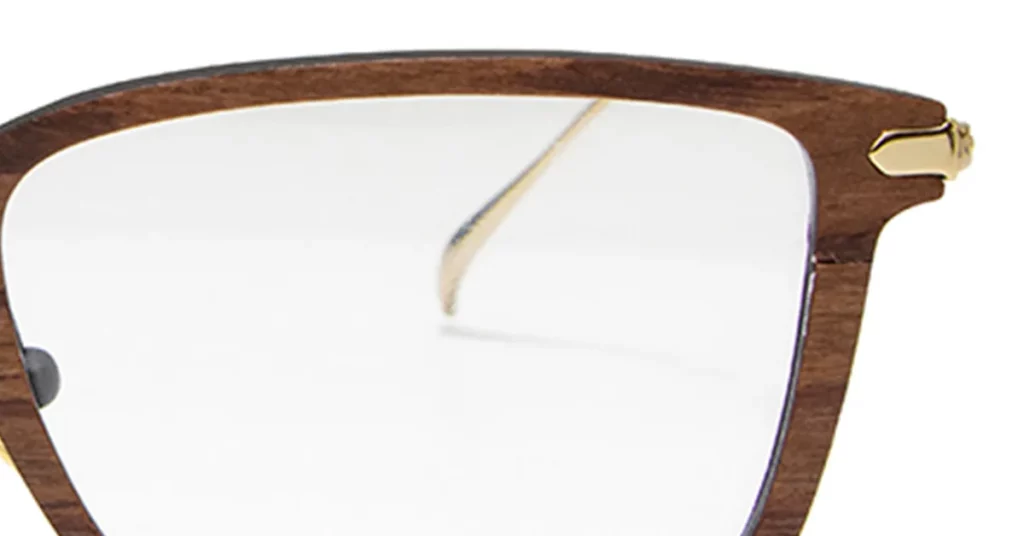
Conclusion
Carbon fiber offers your brand a path to creating exceptionally high-performance eyewear with unmatched lightweight comfort and a distinctive, premium look. However, you must weigh these benefits against the clear disadvantages of high cost, manufacturing complexity, and design limitations. For brands targeting a luxury or performance-focused customer, carbon fiber provides a powerful competitive edge.
Frequently Asked Questions
1. Is carbon fiber stronger than titanium?
While both are very strong, carbon fiber offers a higher strength-to-weight ratio, meaning it can be stronger than titanium for the same amount of weight.
2. Can carbon fiber glasses be adjusted?
No, carbon fiber frames cannot be heated and bent for adjustments like metal or acetate frames can. The fit must be correct from the point of manufacture.
3. Are carbon fiber glasses worth the high cost?
For customers who prioritize the absolute lightest weight, maximum durability, and a high-tech aesthetic, the unique benefits can be well worth the premium price.
4. Why are carbon fiber glasses always black?
The natural color of the carbon material is black. While colors can be applied as a surface finish, it can alter the material’s signature woven look and may be less durable.